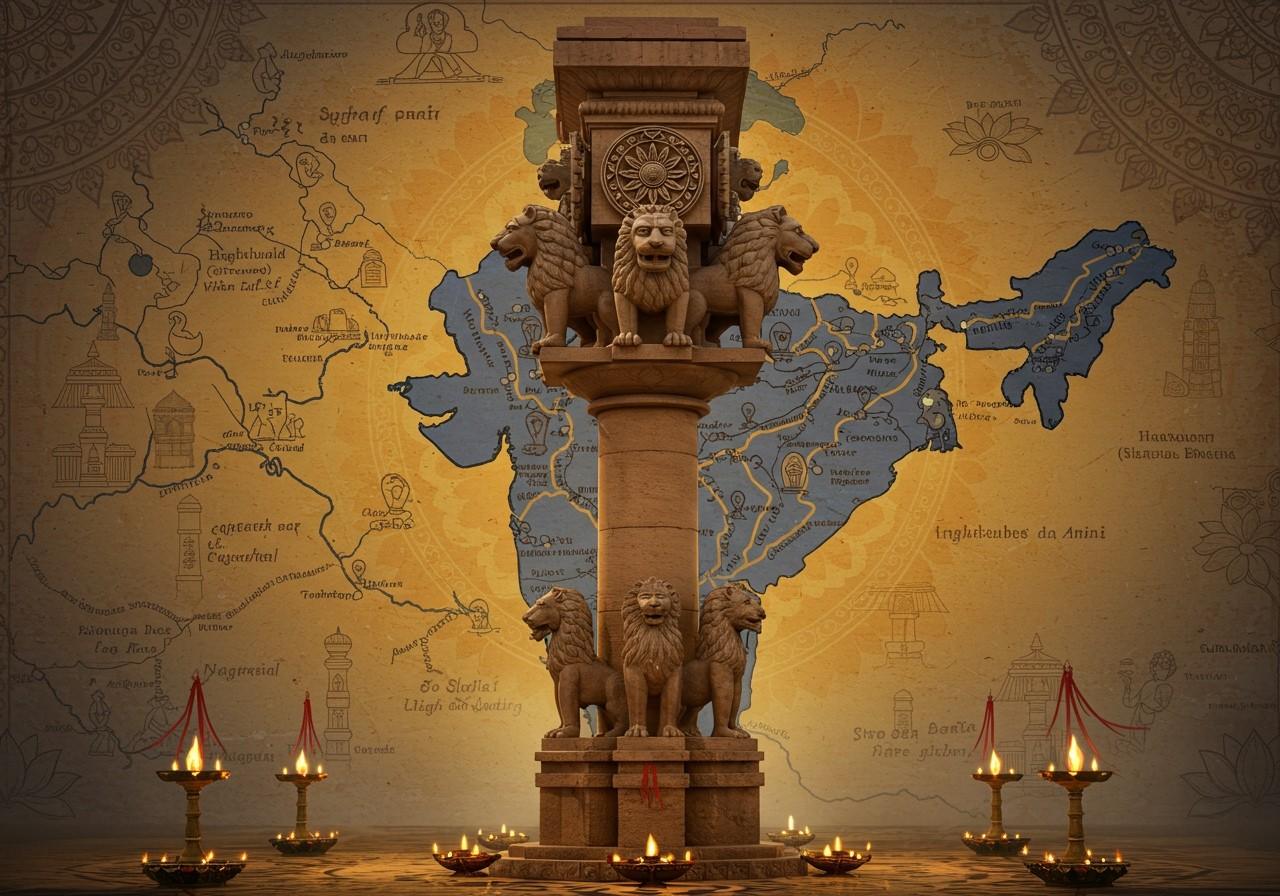
The Ashokan Pillars stand as magnificent testaments to Emperor Ashoka’s reign (circa 268 to 232 BC) and his profound influence on the Indian subcontinent. These monolithic columns, also known as the “pillars of the Dharma,” are not merely architectural marvels but also carry deep historical, cultural, and spiritual significance. They bear inscriptions of Ashoka’s edicts, promoting peace, morality, and compassion, reflecting his embrace of Buddhist principles after the Kalinga War.
Historical Context and Significance
Erected during the 3rd century BCE, the Ashokan Pillars represent a pivotal era in Indian history. Ashoka, following his conversion to Buddhism, used these pillars to disseminate his philosophy of Dharma, emphasizing non-violence, religious tolerance, and social welfare. The pillars served as powerful symbols of his authority and his commitment to spreading Buddhist teachings throughout his vast empire.
The Mauryan Empire, under Ashoka’s rule, played a crucial role in the construction and strategic placement of these pillars. Their locations often coincided with important ancient trade routes and political centers, maximizing their impact on the populace.
Geographical Distribution: Mapping Ashoka’s Influence
The Ashokan Pillars are dispersed across the Indian subcontinent and beyond, including present-day India, Nepal, Pakistan, and even Afghanistan. A map detailing the distribution of Ashokan edicts, including both pillar and rock edicts, reveals the vast extent of Ashoka’s influence across South Asia.
Key regions with significant concentrations of pillars include Bihar, Uttar Pradesh, Madhya Pradesh, and Gujarat. This wide distribution reflects Ashoka’s efforts to reach diverse populations across his empire. Locating these pillars often presents challenges due to historical shifts and ongoing archaeological discoveries.
Key Ashokan Pillar Sites: Exploring the Architectural Marvels
- Sarnath: This site houses the iconic lion capital, now India’s national emblem, showcasing the exceptional artistry of the Mauryan period. It was here that Buddha delivered his first sermon after attaining enlightenment.
- Lumbini (Nepal): Marks the birthplace of Buddha and holds immense spiritual significance for Buddhists worldwide. The Ashokan pillar here commemorates Ashoka’s pilgrimage to this sacred site.
- Lauriya Nandangarh: Known for its remarkably well-preserved inscriptions, providing valuable insights into Ashoka’s edicts and policies. The pillar here stands tall as a testament to the Mauryan Empire’s reach.
- Delhi: The presence of Ashokan pillars in Delhi underscores the historical importance of the region and its connection to the Mauryan dynasty. These pillars serve as reminders of Ashoka’s influence in the area.
Inscriptions and Their Enduring Relevance
The inscriptions on the Ashokan Pillars, primarily in Prakrit language and Brahmi script, offer a glimpse into Ashoka’s philosophy and governance. They emphasize Dharma (moral law), non-violence, religious tolerance, and social welfare. Edicts like the Third Major Rock Edict, promoting kindness to animals, reflect the ethical principles central to Ashoka’s reign. These inscriptions remain relevant in contemporary society, inspiring ethical governance and social responsibility.
Archaeological Significance and Preservation Efforts
The Ashokan Pillars hold immense archaeological value, providing crucial insights into the Mauryan Empire’s history, art, and culture. They are essential for understanding ancient Indian metallurgy and craftsmanship. The Archaeological Survey of India plays a vital role in the preservation of these invaluable artifacts. Ongoing preservation efforts address challenges posed by weathering and human activities, ensuring these historical monuments endure for future generations.
Cultural Impact and Legacy: A Timeless Symbol
The Ashokan Pillars continue to inspire and influence modern India. Their iconic imagery appears in art, literature, and even film. The lion capital, adopted as India’s national emblem, symbolizes strength, courage, and national pride. These pillars also play a significant role in promoting Buddhist tourism, connecting visitors with India’s rich spiritual heritage.
Connect with India’s Heritage through Poojn.in
Poojn.in, India’s leading online store for cultural and religious goods, offers a wide range of products that resonate with the spiritual and historical significance of the Ashokan Pillars. As you delve into the rich history of these monuments, explore our collection of authentic items:
- Shiva Lingam and Nandi Sets: These beautifully crafted sets symbolize devotion and reverence, echoing the spiritual sentiments of ancient India.
- Spiritual Idols and Sculptures: Discover a diverse range of meticulously crafted idols, including Buddha statues and other deities, reflecting the artistic traditions of the Mauryan era.
- Pooja Asans (Prayer Mats): Enhance your meditation and prayer practices with our traditional asans, creating a sacred space for reflection and connection with your inner self.
At Poojn.in, we are committed to providing high-quality, authentic products that connect you with India’s rich cultural heritage. Visit us today and embark on a journey of spiritual discovery.


